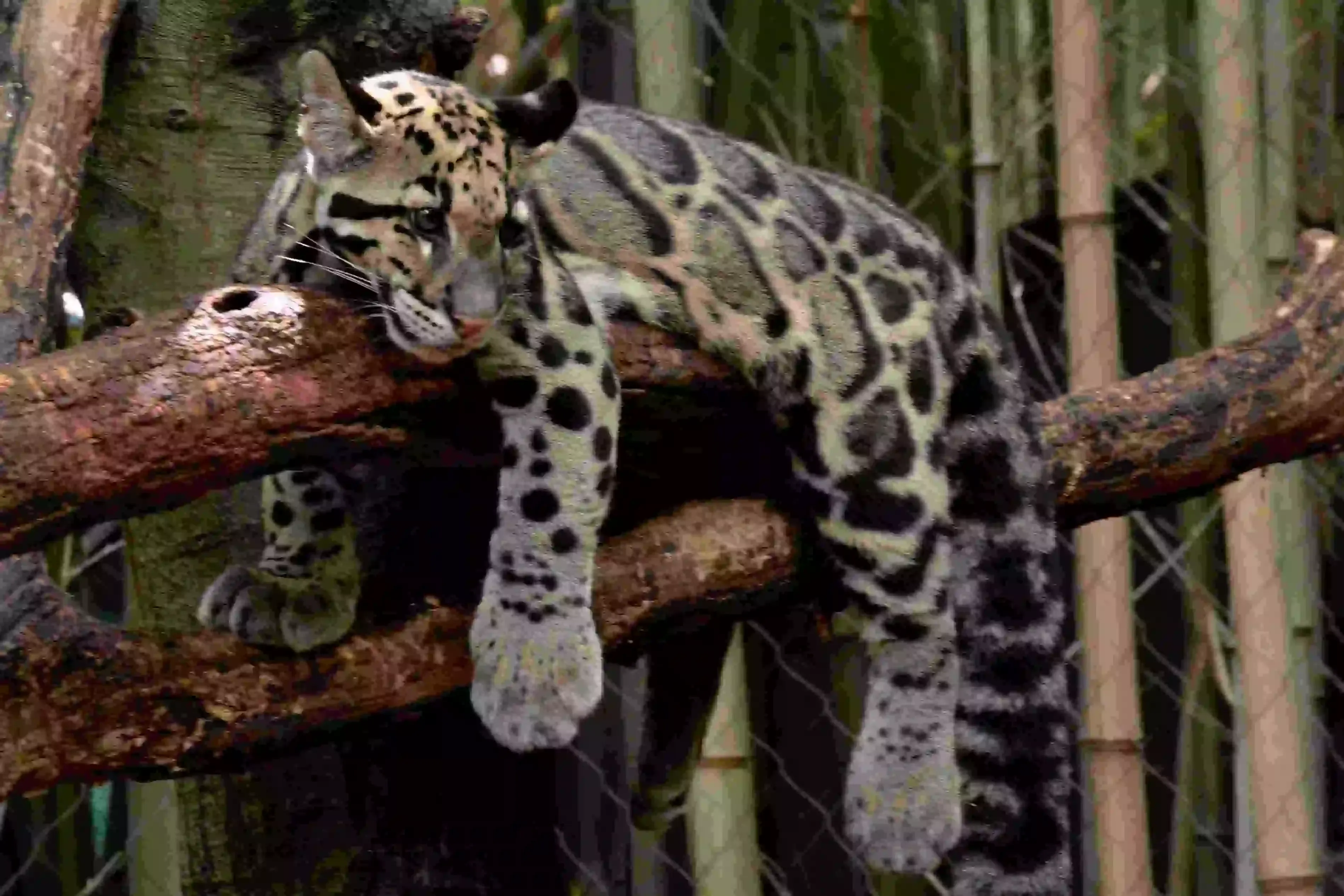Clouded Leopards Size, Habitat, Behavior, Diet and Reproduction
Clouded Leopards are small, wild felines native to a wide range of habitats across Asia. They are known for their distinctive leopard-like appearance, characterized by spotted coats and a sleek, slender build.
Clouded Leopards Size, Habitat, Behavior, Diet and Reproduction
Here is some information about Clouded Leopard.
Common Name: Clouded Leopard
Scientific name: Neofelis nebulosa
Range: Southeast Asia
Weight: 15 – 22 kg
Gestation period: 93 days
Diet: Carnivorous
Conservation status: Vulnerable
1. Physical Appearance:
Leopard cats are relatively small in comparison to other
wild cats. They have a slim and agile build, with an average body length
ranging from 18 to 32 inches and a tail length of 8 to 12 inches. Adult leopard
cats typically weigh between 1.8 to 6.8 kg.
 |
| Clouded Leopard |
These cats have a unique coat pattern that varies among subspecies. Generally, their fur is covered in small spots and rosettes, resembling those of a leopard, hence the name. The background color of their fur can range from gray to yellowish-brown, and their underparts are typically lighter. The tail is long and has a few dark rings.
2. Distribution:
Leopard cats are highly adaptable and can be found in a
variety of environments, including tropical rainforests, deciduous forests,
grasslands, and even urban areas.
Their range spans across a vast region in Asia, from the Russian Far East and Northeast China, through Southeast Asia, to the Indian subcontinent. Different subspecies exist across this range, adapted to their specific environments.
3. Behavior:
Clouded Leopard cats are primarily nocturnal hunters, preying on
small mammals, birds, and insects. They are skilled climbers and swimmers,
which helps them navigate various terrains in their search for prey.
 |
| Clouded Leopard Clombing |
These cats are generally solitary creatures, with males and females coming together only for mating purposes. These cats are known for their elusive nature, making them challenging to observe in the wild.
4. Diet:
Clouded Leopard cats are obligate carnivores, relying on a diet of small mammals, birds, reptiles, and insects. They are skilled hunters and use their agility and sharp senses to catch prey.
5. Reproduction:
Clouded Leopard cats are solitary animals, and their mating habits can vary based on their location. In some areas, they breed throughout the year, while in others, there may be distinct breeding seasons. Female leopard cats give birth to a litter of two to four kittens after a gestation period of approximately 60 to 70 days.
6. Conservation Status:
Leopard cats face various threats, including habitat loss
due to deforestation, poaching for their fur, and illegal pet trade. Their
beautiful pelts have made them targets for poaching. The conversion of their
natural habitats into agricultural land poses a significant risk to their
populations.
In conclusion, leopard cats are fascinating wild felids with
a unique appearance and a crucial role in maintaining ecological balance in
their native habitats. Conservation efforts are vital to ensuring their
survival and preserving the biodiversity of the regions they inhabit.





